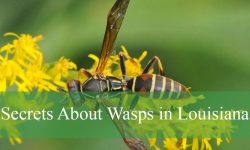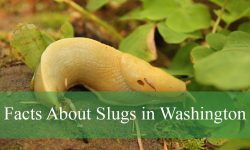Texas hosts a wide variety of bugs, from tiny biting insects to larger, more noticeable species. In urban neighborhoods, rural farms, or outdoor settings, encountering bugs is a normal part of life in the Lone Star State. Knowing how to identify common bugs and understand their behavior can help protect you and your family.
This article presents 30 common bugs found throughout Texas, featuring detailed descriptions and photos for easy identification. It covers important information such as their appearance, habitats, and any risks associated with bites, stings, or disease transmission.
Gaining knowledge about these bugs helps in managing pests safely while appreciating their roles in Texas ecosystems. This guide is useful for homeowners, gardeners, and outdoor lovers wanting to stay informed about local bugs.
Different Types of Bugs in Texas
Mosquitoes
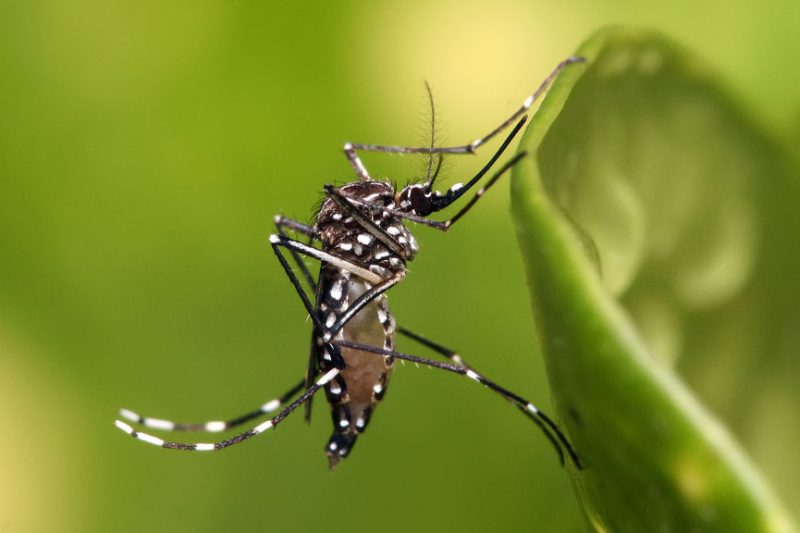
Mosquitoes are one of the most widespread and troublesome insects in Texas, particularly active from spring through fall. These small flying insects are known for their long legs, slender bodies, and sharp, tube-like mouthparts used to pierce the skin and suck blood. Only female mosquitoes bite, as they require blood to develop their eggs, while males feed on plant nectar.
Measuring around 0.2 to 0.4 inches in length, mosquitoes are easily identified by their whiny buzz and quick, darting flight. Their bites typically result in itchy, red welts due to the body’s allergic reaction to mosquito saliva. In some cases, excessive scratching may lead to infection, and some individuals experience more intense swelling than others.
In Texas, mosquitoes are more than a mere nuisance—they can carry and transmit serious diseases. Species such as Culex and Aedes mosquitoes are known to spread West Nile virus, Zika virus, and other illnesses. They breed in stagnant water, making places like puddles, birdbaths, and clogged gutters ideal habitats. Texas’ warm, humid climate provides mosquitoes with nearly year-round activity in some regions.
Fire Ants
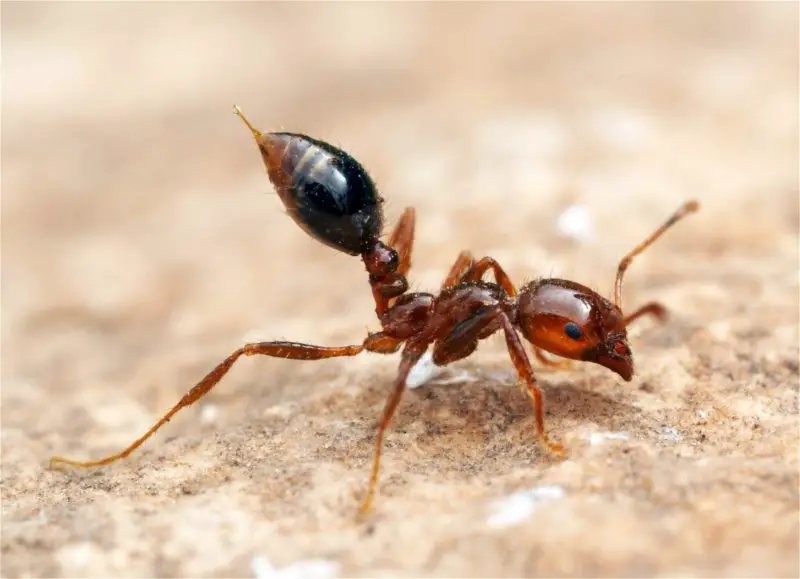
Fire ants are notorious in Texas for their aggressive behavior and painful stings. They are small reddish-brown ants, usually 1/8 to 1/4 inch long, and often build large mounds in open, sunny areas such as lawns, parks, and pastures. These ants are quick to attack anything that disturbs their nest, delivering multiple stings in rapid succession.
When a fire ant stings, it clamps down with its jaws and injects venom through a stinger. This results in a burning sensation followed by itchy, pus-filled pustules that can last for days. In some people, fire ant stings can trigger severe allergic reactions, including swelling, hives, or even anaphylaxis in rare cases.
Fire ants are found throughout Texas, thriving in the state’s warm, dry conditions. Their colonies can contain hundreds of thousands of individuals, and their aggressive defense makes them a persistent threat to people, pets, and wildlife. Fire ants often invade yards, fields, and even electrical equipment, causing both physical and structural damage.
Fleas
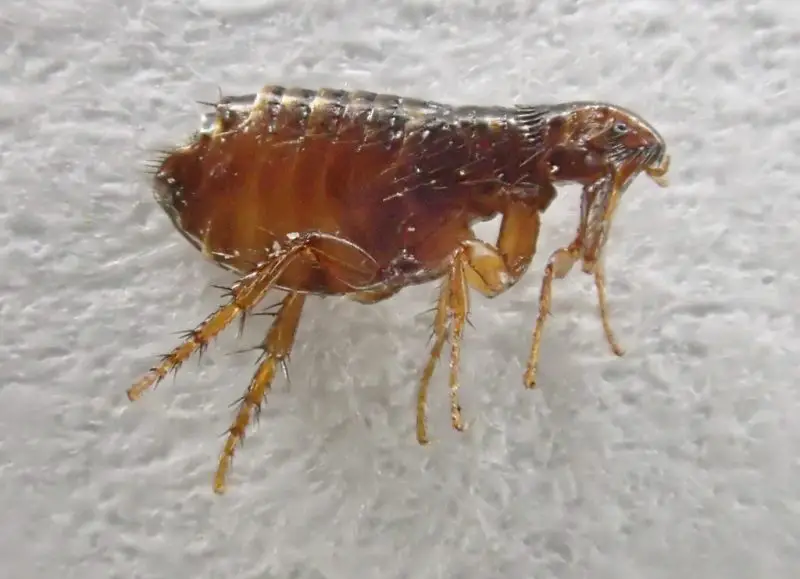
Fleas are tiny, wingless insects that are extremely common in Texas, particularly in homes with pets like dogs and cats. They are dark reddish-brown in color and typically measure about 1/8 inch in length. Fleas are expert jumpers, using their powerful hind legs to leap onto hosts for feeding.
These blood-feeding parasites cause discomfort by biting both animals and humans. Flea bites appear as small, itchy red bumps, often grouped in clusters around the ankles or legs. Their saliva can cause allergic reactions in some individuals, leading to more severe itching and irritation. In animals, flea infestations can lead to skin problems and anemia.
Fleas thrive in warm, humid environments and are particularly active from spring to fall in Texas. They often live in pet bedding, carpets, and shaded outdoor areas. Besides causing irritation, fleas are also known to carry diseases such as typhus and can transmit tapeworms to pets and humans. Control requires treating both pets and living environments thoroughly.
Ticks
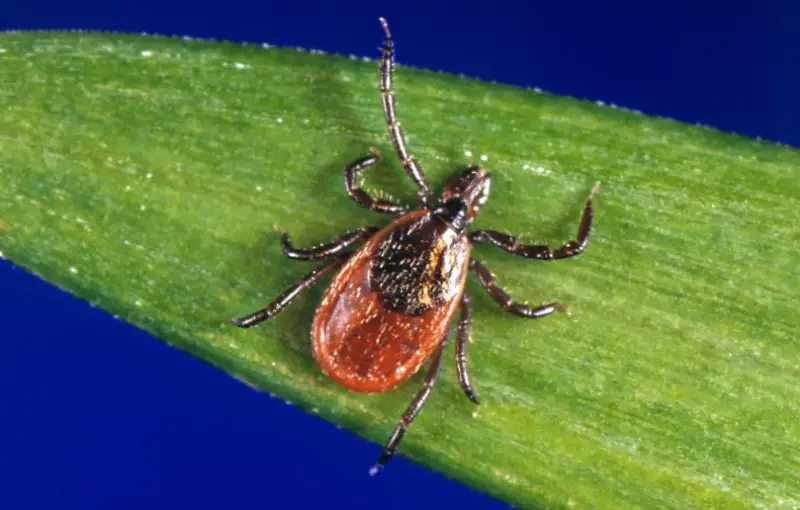
Ticks are small, spider-like arachnids that are widespread across Texas, especially in wooded areas, tall grasses, and brush. Most adult ticks measure between 1/8 and 1/4 inch but can swell considerably after feeding. They attach to hosts—including humans, pets, and wildlife—by embedding their mouthparts into the skin to draw blood.
Ticks are known for their stealthy behavior; bites are usually painless, and they often go unnoticed until the tick is engorged. Some common ticks in Texas include the Lone Star tick, the black-legged tick (deer tick), and the American dog tick. Each type poses potential health risks to both humans and animals.
One of the most significant concerns with ticks is their ability to transmit diseases. In Texas, ticks are known to spread illnesses such as Lyme disease, Rocky Mountain spotted fever, and ehrlichiosis. Prevention involves wearing protective clothing, using tick repellents, and thoroughly checking the body and pets after spending time in grassy or wooded environments.
Chiggers
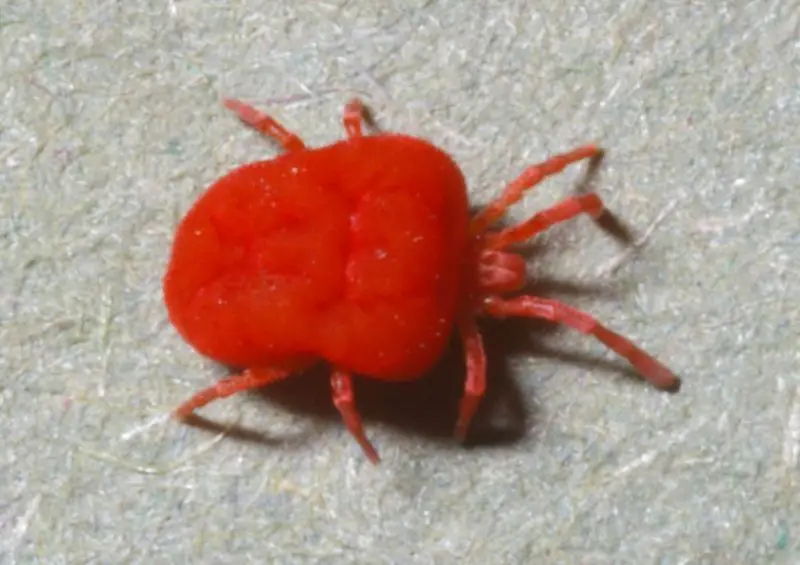
Chiggers are the larval stage of certain mites and are notorious in Texas for their intensely itchy bites. These tiny, red-colored pests are almost invisible to the naked eye, measuring less than 1/150 inch. Despite their size, their presence is often felt after time spent in grassy fields, wooded areas, or lawns with tall vegetation.
Chiggers do not burrow into the skin, as is commonly believed. Instead, they attach to skin pores or hair follicles and inject digestive enzymes that break down skin cells. This causes intense itching, usually appearing as clusters of red welts or bumps around areas where clothing fits tightly, like waistbands, socks, or underarms.
In Texas, chiggers are especially active during the warmer months, from late spring to early fall. They tend to hide in dense, moist vegetation and are most commonly encountered when sitting or walking through grass. While chigger bites do not transmit diseases in the U.S., the itching can be severe and may lead to secondary infections if scratched excessively.
No-see-ums (Biting Midges)
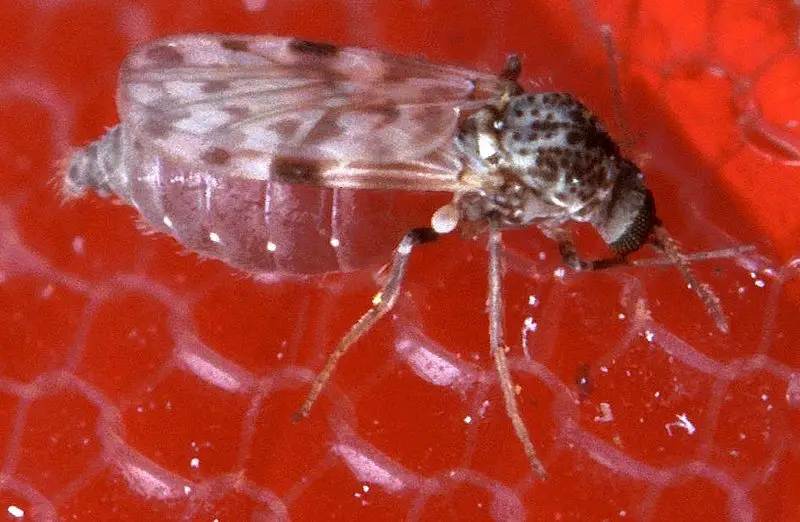
No-see-ums, also known as biting midges, are minuscule flying insects that are almost invisible to the naked eye. Measuring only about 1 to 3 millimeters in length, they have delicate, grayish bodies and are often mistaken for tiny specks of dust. Despite their small size, female no-see-ums pack a painful bite as they feed on blood to produce eggs.
Their bites may go unnoticed at first, but they soon develop into small, red welts that are intensely itchy and irritating. In some cases, the reaction can last for several days and may lead to excessive scratching or secondary skin infections. People with sensitive skin may develop more pronounced swelling or rash-like symptoms.
In Texas, no-see-ums are most active during the warmer months, especially at dawn and dusk. They are commonly found in humid environments like marshes, coastal regions, and near standing water. Because of their tiny size, they can pass through standard window screens and often become a nuisance in outdoor settings such as campsites, backyards, and lakeside areas.
Horse Flies
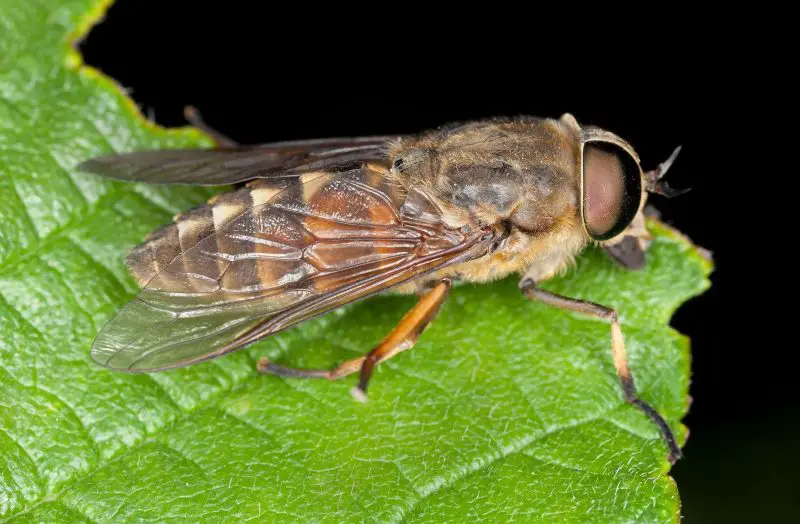
Horse flies are large, robust flies known for their powerful flight and painful bites. They can grow up to 1 inch long and are typically gray or black with large, brightly colored or iridescent eyes. Unlike many other biting insects, horse flies have scissor-like mouthparts that tear the skin rather than piercing it, resulting in a painful wound.
The bite from a horse fly is often described as sharp and burning, and it may bleed freely due to the anticoagulant properties in the fly’s saliva. Female horse flies feed on blood, while males primarily consume nectar. Their aggressive biting behavior can cause severe discomfort to both humans and livestock.
Horse flies are widespread across Texas, especially in rural and agricultural areas. They thrive near bodies of water such as ponds, streams, and wetlands, where they lay their eggs. Because of their strong flight capabilities, they are difficult to avoid and often swarm in sunny, open spaces near farms, ranches, and pastures.
Deer Flies
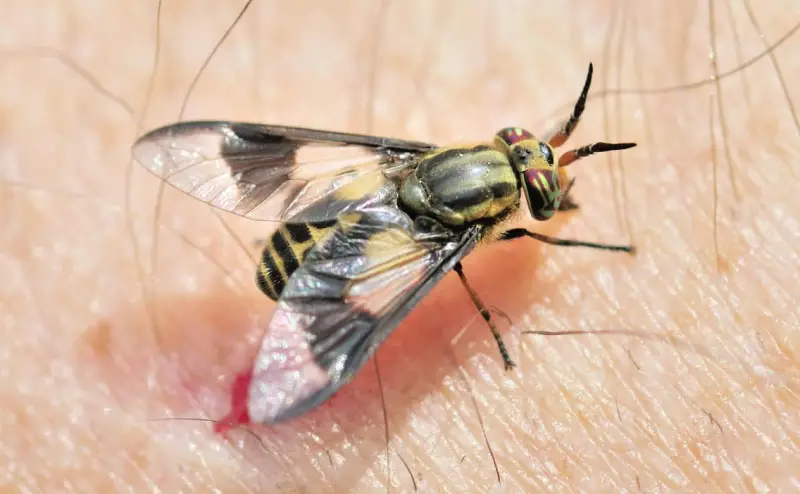
Deer flies are similar to horse flies but are generally smaller, measuring about 1/4 to 1/2 inch in length. They are often recognized by their dark bands or spots on the wings and brightly colored eyes. Like their larger cousins, female deer flies feed on blood, using blade-like mouthparts that cause a painful bite.
The bites of deer flies are quite painful and often cause swelling, redness, and prolonged itching. These flies are persistent and can follow people for long distances, making them particularly bothersome during outdoor activities. They are also capable of transmitting certain diseases, such as tularemia, although such cases are rare in Texas.
In Texas, deer flies are most common in wooded, marshy, or swampy environments, especially during the summer months. They are often encountered near lakes, rivers, and forested trails where wildlife is abundant. Due to their habitat preferences and biting behavior, they are a frequent nuisance to hikers, campers, and outdoor workers.
Bed Bugs
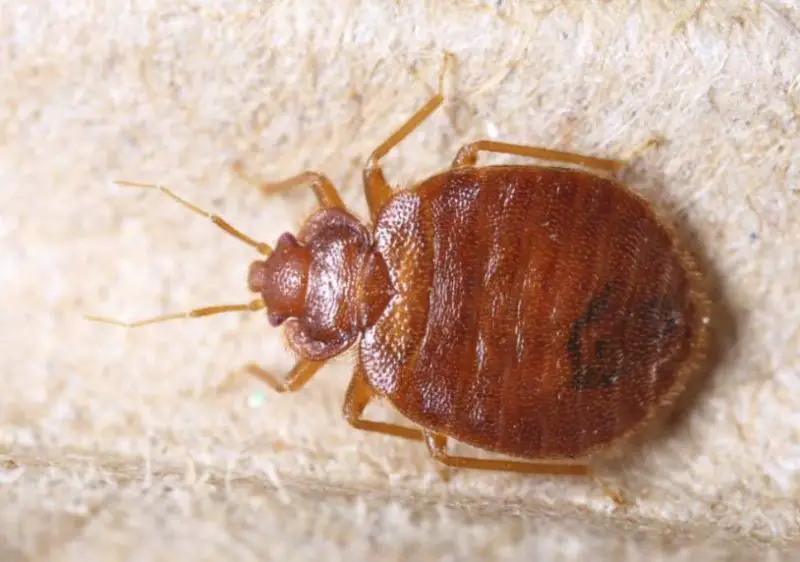
Bed bugs are small, flat, reddish-brown insects that feed exclusively on blood. They typically measure about 1/4 inch in length and have oval-shaped bodies that swell noticeably after feeding. Bed bugs are nocturnal and most active at night, often biting people while they sleep by piercing the skin with two hollow tubes—one for injecting saliva and one for drawing blood.
Bites from bed bugs usually appear as small, itchy red bumps in a line or cluster, commonly found on exposed areas like the arms, neck, or back. While their bites are not known to transmit diseases, they can cause allergic reactions, insomnia, and psychological stress due to their presence and difficulty in elimination.
In Texas, bed bugs are found in both urban and rural settings, particularly in densely populated areas such as apartment complexes, hotels, dormitories, and shelters. They are expert hitchhikers, spreading easily via luggage, clothing, and furniture. Infestations require professional pest control and can be notoriously difficult to eliminate completely without thorough treatment.
Wasps
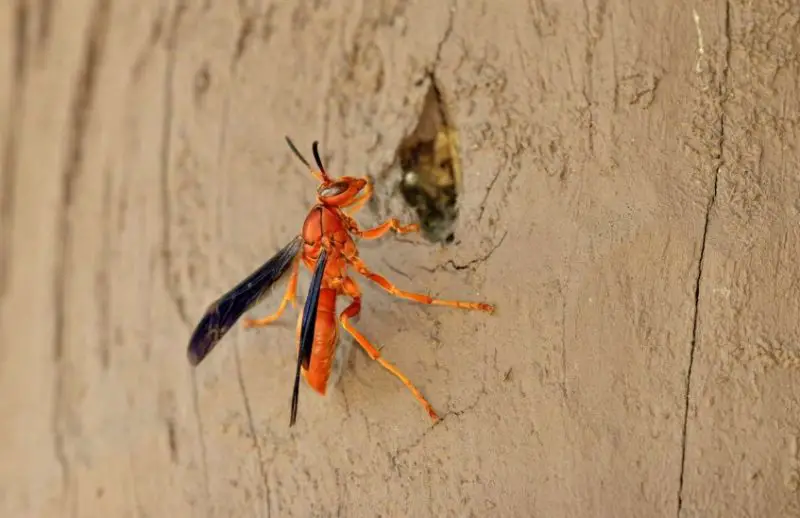
Wasps are a diverse group of stinging insects commonly found throughout Texas, especially during the warmer months. Two of the most frequently encountered species are yellowjackets and paper wasps. They can range in size from 1/2 to 1 inch long and have slender, segmented bodies with narrow waists and smooth, hairless exteriors.
Unlike bees, wasps can sting multiple times and tend to be more aggressive when provoked. Their stings deliver venom that causes immediate pain, swelling, and redness. In sensitive individuals, wasp stings can trigger allergic reactions, ranging from mild hives to severe anaphylaxis. Nests are often found under eaves, in attics, trees, or shrubs.
Wasps are attracted to sweet foods, meats, and sugary drinks, making them a common nuisance at outdoor gatherings and picnics. In Texas, they are particularly active during late summer and early fall. Their nests should be approached with caution, and professional removal is recommended when they are found near homes or public spaces.
Bees
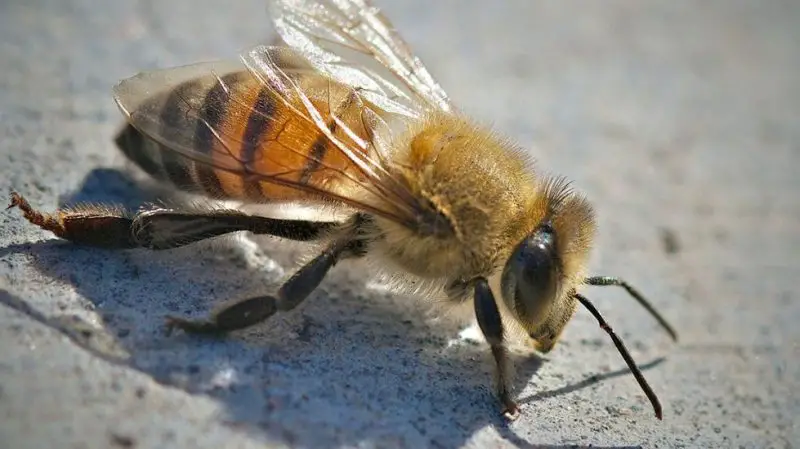
Bees are a diverse group of insects found throughout Texas, including both European honey bees and native species such as bumblebees and solitary bees. Most bees are medium-sized, fuzzy, and usually yellow and black in color, although appearances vary widely among species. They are crucial pollinators and are typically non-aggressive unless threatened.
Bee stings occur when a bee feels threatened or is accidentally disturbed. A sting delivers venom that causes a sharp, burning pain, followed by localized swelling and redness. While a single sting is usually mild, individuals allergic to bee venom may experience serious reactions such as swelling beyond the sting site or even anaphylaxis, which requires immediate medical attention.
In Texas, bees can be found in gardens, meadows, parks, and forests. Honey bees often nest in hives—whether managed by beekeepers or occurring in the wild—while native bees may nest in the ground or within dead wood. Bees are most active during the warmer months and play a vital role in both agriculture and native ecosystems across the state.
Black Widow Spiders
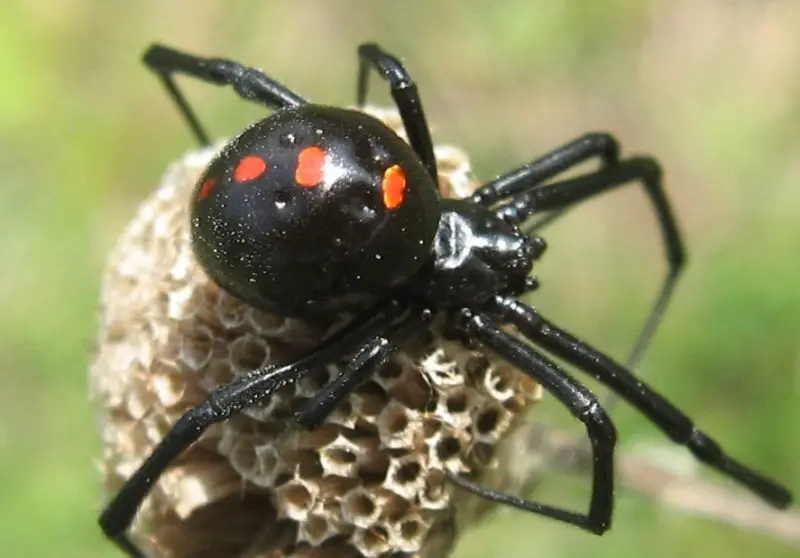
Black widow spiders are among the most venomous spiders in Texas and are easily recognized by their glossy black bodies and the distinctive red hourglass marking on the underside of the abdomen. Females are much larger than males, measuring about 1.5 inches across including the legs. They tend to stay hidden in dark, secluded areas.
The bite of a black widow can cause immediate sharp pain followed by muscle cramps, spasms, and stiffness. Other symptoms may include nausea, sweating, and difficulty breathing. While their venom is highly toxic, fatalities are extremely rare with prompt medical treatment. Children and the elderly are more vulnerable to severe reactions.
In Texas, black widows are often found in garages, sheds, woodpiles, crawl spaces, and other sheltered, low-traffic areas. They build irregular, tangled webs near the ground and usually retreat when disturbed. Caution is advised when reaching into dark or undisturbed areas, especially during the warmer months when they are most active.
Brown Recluse Spiders
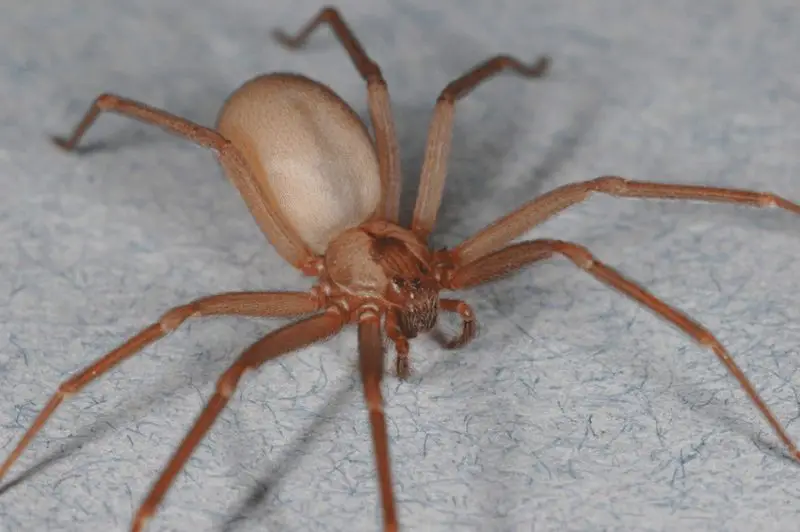
Brown recluse spiders are infamous in Texas for their potent venom and elusive behavior. These spiders are medium-sized, about the size of a quarter, and are typically light to dark brown with a violin-shaped marking on their back. As their name implies, they are shy and prefer to remain hidden in undisturbed indoor and outdoor locations.
The bite of a brown recluse is usually painless at first but may develop into a blister and then an open sore with necrotic tissue over several days. In rare cases, systemic symptoms like fever, chills, or malaise may occur. While bites can be serious, they are rarely fatal and often heal with proper wound care and medical supervision.
Brown recluse spiders in Texas often hide in clothing, shoes, bedding, boxes, and storage areas. They are especially active during spring and summer and may enter homes through gaps and vents. Because they prefer quiet, cluttered environments, it’s important to shake out items and inspect storage spaces before use.
Velvet Ants (Cow Killer Wasps)
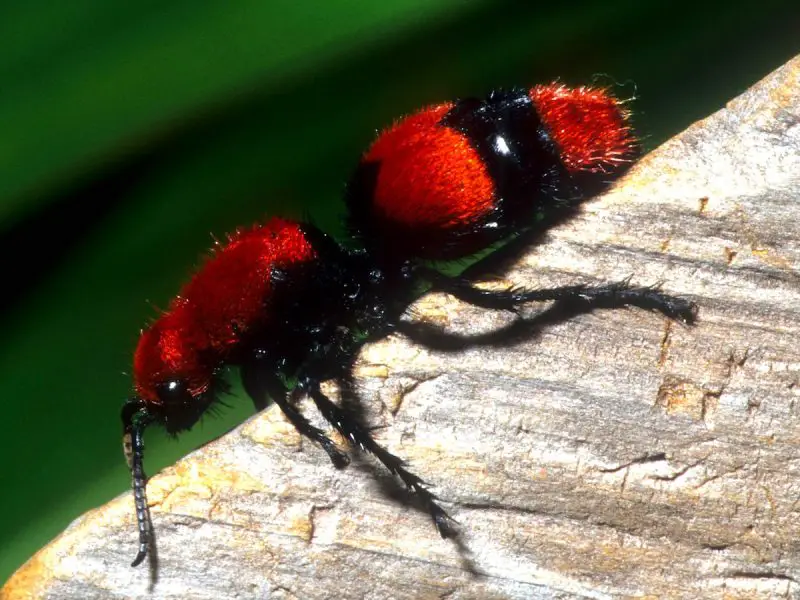
Velvet ants, often referred to as “cow killers,” are actually a type of wingless female wasp known for their striking appearance and extremely painful sting. They have bright, velvety red, orange, or yellow coloring with black bands and a dense covering of hair. These solitary insects can grow up to 1 inch long and are often mistaken for ants.
Despite their nickname, velvet ants do not actually kill cows, but their sting is incredibly painful—often described as one of the most intense stings among insects. Fortunately, they are not aggressive and will sting only if handled or stepped on. Male velvet ants, which have wings, do not sting.
Velvet ants are commonly found in sandy, dry, and open areas throughout Texas, such as fields, trails, and pastures. They often scurry along the ground in search of ground-nesting bee and wasp larvae to parasitize. While their sting can be alarming, they pose no serious health threat and are best left alone.
Tarantulas
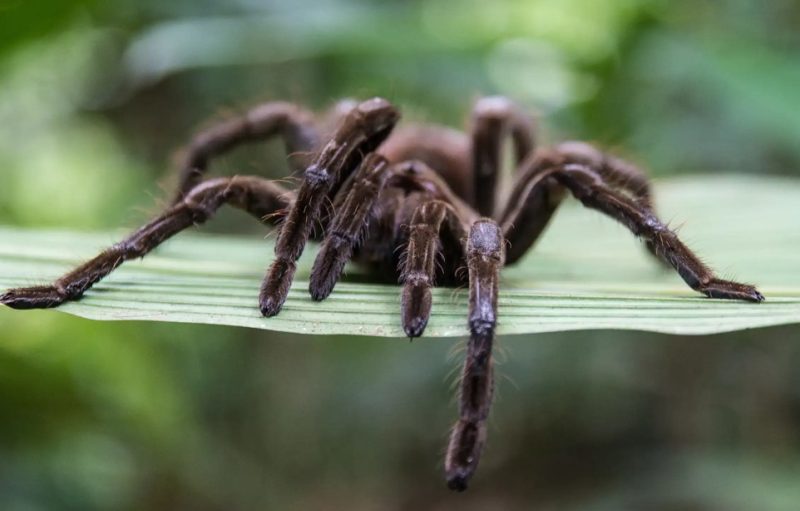
Tarantulas are the largest spiders native to Texas and are easily recognized by their large, hairy bodies and long legs, which can span up to 5 inches or more. They vary in color but are often brown, black, or tan. Despite their intimidating appearance, tarantulas are generally docile and pose little threat to humans.
A tarantula bite is rare and typically no more harmful than a bee sting, causing mild pain, swelling, and redness. However, these spiders can also defend themselves by flicking tiny urticating hairs from their abdomen, which can cause itching or irritation if they come into contact with the skin or eyes.
In Texas, tarantulas are most often found in dry, open areas like deserts, grasslands, and scrublands. They live in burrows and come out primarily at night or during the mating season, when males wander in search of females. Although their size can be unsettling, tarantulas are beneficial predators that help control insect populations.
Assassin Bugs (Kissing Bugs & Western Corsair)
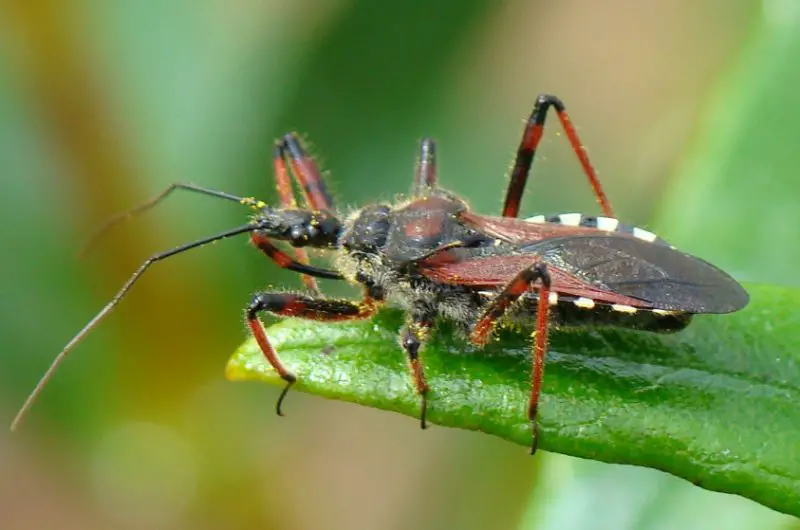
Assassin bugs are a diverse group of predatory insects found throughout Texas, with the most notable types being kissing bugs and the Western corsair. These bugs have elongated bodies, narrow heads, and strong, curved mouthparts used to pierce and suck fluids from prey—or sometimes humans. Most species are dark brown to black and measure between 1/2 and 1 inch in length.
While assassin bugs primarily prey on other insects, some species, such as kissing bugs (Triatoma spp.), will bite humans. Their bites are usually painless at first but may become swollen, itchy, or painful later. In rare cases, kissing bugs can transmit Trypanosoma cruzi, the parasite responsible for Chagas disease—a potentially serious illness affecting the heart and digestive system.
In Texas, assassin bugs are found in wooded areas, under logs, near homes, and even indoors, particularly in rural settings. Kissing bugs are most active at night and are attracted to lights and carbon dioxide exhaled by sleeping people. Preventive measures include sealing entry points and avoiding sleeping in poorly screened outdoor areas.
Scabies Mites
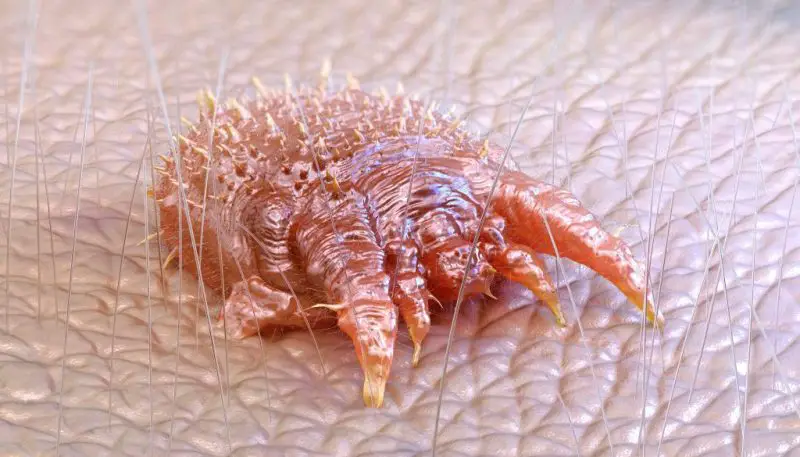
Scabies mites are microscopic, parasitic arthropods that burrow into human skin to lay eggs. These mites are nearly impossible to see with the naked eye, measuring about 0.3 millimeters in length. Once under the skin, they cause an intense allergic reaction that results in severe itching, rash, and small, red, pimple-like bumps.
Symptoms of a scabies infestation include persistent itching—especially at night—and the appearance of thin, wavy burrow lines, often found in folds of skin like wrists, elbows, and between fingers. Scratching can lead to open sores and secondary infections. Scabies spreads through prolonged skin-to-skin contact or by sharing clothing and bedding with an infested person.
In Texas, scabies can be found anywhere people live or gather closely, including schools, nursing homes, dormitories, and shelters. Outbreaks are more common in places with poor hygiene or crowded living conditions. Treatment involves prescription topical creams or oral medication to eliminate the mites and their eggs.
Lice (Head & Body)
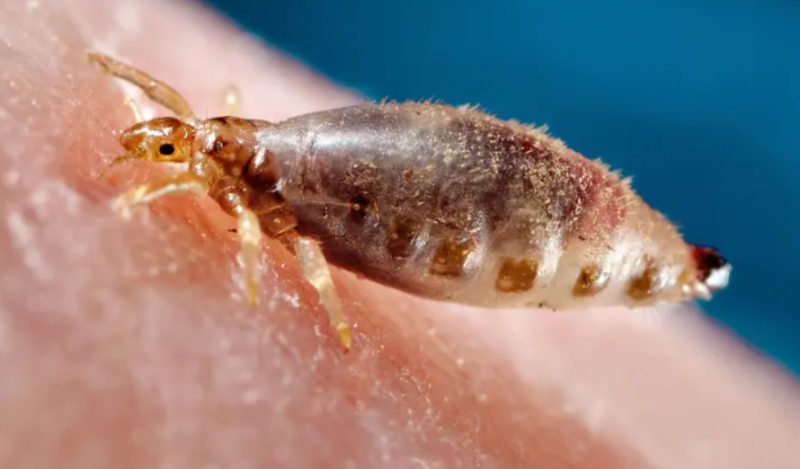
Lice are small, wingless parasitic insects that live on humans and feed on their blood. There are different types of lice, including head lice (Pediculus humanus capitis) and body lice (Pediculus humanus corporis). Head lice are about 2 to 3 millimeters long and typically found on the scalp, while body lice live on clothing and move to the skin to feed.
Infestation causes intense itching due to allergic reactions to louse saliva. Scratching can lead to skin irritation, sores, and sometimes bacterial infections. Nits, or lice eggs, are commonly visible attached to hair shafts, especially behind the ears and at the nape of the neck. Body lice may also transmit diseases such as trench fever and louse-borne typhus, though these are rare in Texas.
Lice are common in schools, households, and facilities where people are in close contact. In Texas, head lice infestations are most frequent among children and can spread rapidly through shared hats, combs, and bedding. Treatment involves over-the-counter or prescription shampoos, manual removal of nits, and cleaning of personal items.
Mites (Other)

Aside from scabies mites, Texas is home to various other mite species that can irritate the skin of humans and animals. These include bird mites, rodent mites, and clover mites. Most mites are less than 1 millimeter in size and difficult to detect without magnification. They often bite or crawl on humans, causing mild to intense itching or rash-like reactions.
While these mites do not burrow into the skin like scabies, they can cause dermatitis-like symptoms, including red spots, swelling, and discomfort. Infestations typically arise from contact with infested animals, nests, or furniture. Unlike lice or fleas, mites do not live long on humans and usually infest areas rather than individual people.
In Texas, mite activity increases during warm seasons, especially in areas with bird nests or rodent infestations. Homes, barns, and attics can become hotspots for mite problems. Effective control includes identifying and removing the host source, vacuuming, and applying appropriate pest control treatments.
Sand Flies
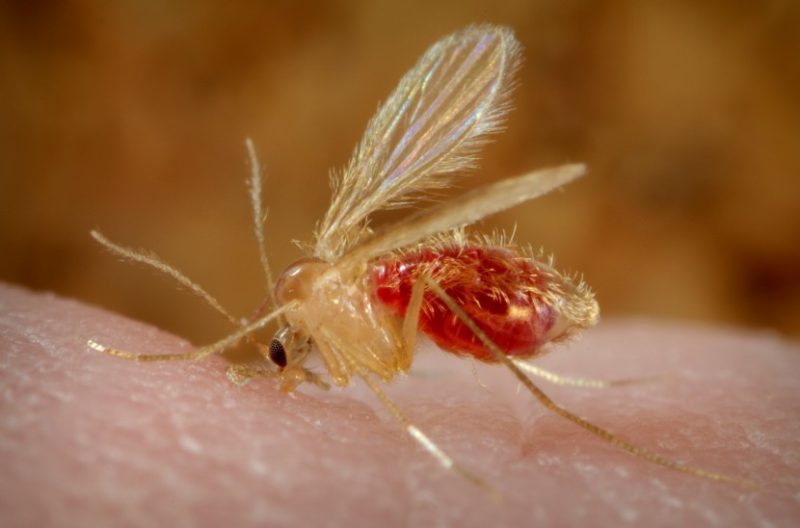
Sand flies are tiny, delicate insects commonly found in sandy or dusty environments throughout Texas. They are typically light brown or tan and measure just 1/8 inch in length, with long legs and hairy wings held in a V-shape. Sand flies are weak fliers and are most active at dusk and nighttime.
Although their bite is usually mild compared to other insects, it can still cause discomfort. A sand fly bite may result in a small, red bump that becomes itchy and irritated. In rare cases, sand flies can transmit Leishmania parasites, which cause leishmaniasis—a serious skin or internal disease—but this is not common in Texas.
Sand flies are often found near creeks, rivers, construction sites, or arid regions with sandy soil. They thrive in warm, humid conditions and are more active during the summer and early fall. To avoid bites, Texans should use insect repellents and wear protective clothing when in areas known for sand fly activity.
Black Flies
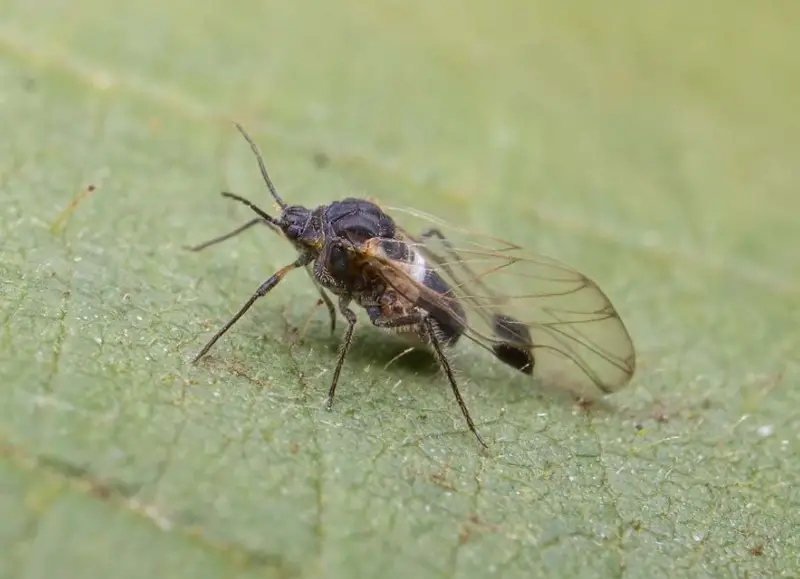
Black flies are small, stout-bodied insects measuring about 1/8 inch long, recognized by their humpbacked appearance and dark coloration. They are notorious for their painful bites that cause redness, swelling, and intense itching. Unlike mosquitoes, black flies bite by cutting the skin to feed on blood, which often leads to localized bleeding.
In Texas, black flies are commonly found near flowing water such as streams, rivers, and ponds because their larvae develop in clean, oxygen-rich aquatic environments. These flies are most active during spring and early summer when water levels are optimal. Their bites can be especially troublesome to outdoor enthusiasts and livestock, sometimes causing allergic reactions.
Although black flies do not transmit diseases in Texas, their persistent biting behavior makes them a significant nuisance. Protective clothing, insect repellents, and avoiding peak activity times can help reduce exposure. Black flies tend to swarm, making encounters with large numbers particularly irritating.
Gnats (Biting Gnats)

Biting gnats, also known as no-see-ums or midges, are tiny flying insects that often appear in large swarms. They measure only a few millimeters in length and are barely visible to the naked eye. Female biting gnats feed on blood, producing small but itchy bites that can cause discomfort for several days.
These insects tend to be active during early morning and late afternoon, especially near moist environments like wetlands, marshes, and bodies of stagnant water found across Texas. Their bites usually result in small red bumps, which may become inflamed or irritated due to scratching.
While biting gnats do not transmit diseases in Texas, their sheer numbers and persistent attacks can spoil outdoor activities. Using fine mesh screens, insect repellents, and avoiding heavily infested areas during peak times are common prevention measures.
Centipedes (Scolopendra heros)
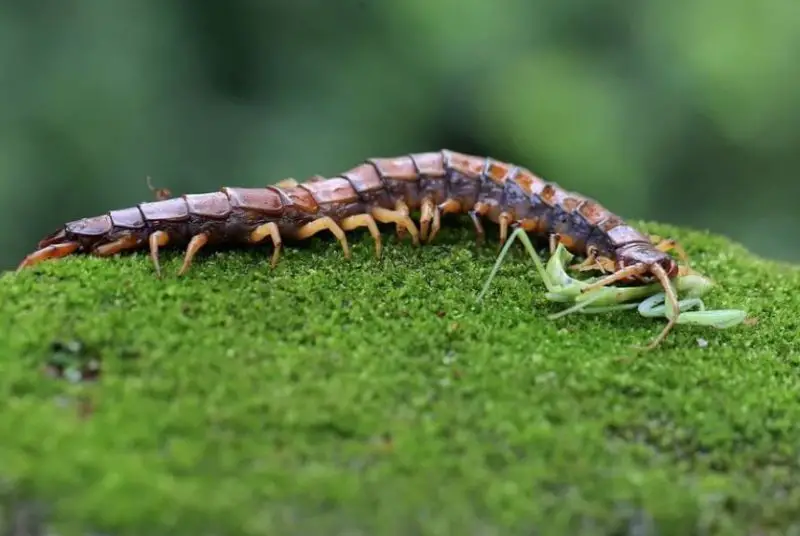
The giant desert centipede, Scolopendra heros, is one of the largest centipedes native to Texas, growing up to 8 inches long. These multi-legged arthropods have elongated, segmented bodies colored reddish-brown or orange, with powerful venomous claws (forcipules) near the head used to capture prey and defend themselves.
Centipedes are nocturnal hunters that feed on insects and small animals. When threatened, Scolopendra heros can deliver a painful bite that feels like a sharp needle prick. Though their venom is not usually dangerous to humans, the bite can cause localized swelling, redness, and significant pain lasting several hours.
In Texas, these centipedes prefer dry, sheltered habitats such as under rocks, logs, or leaf litter. They are generally shy and avoid humans but may occasionally wander indoors. Keeping homes sealed and reducing clutter can help minimize encounters with these large arthropods.
Blister Beetles
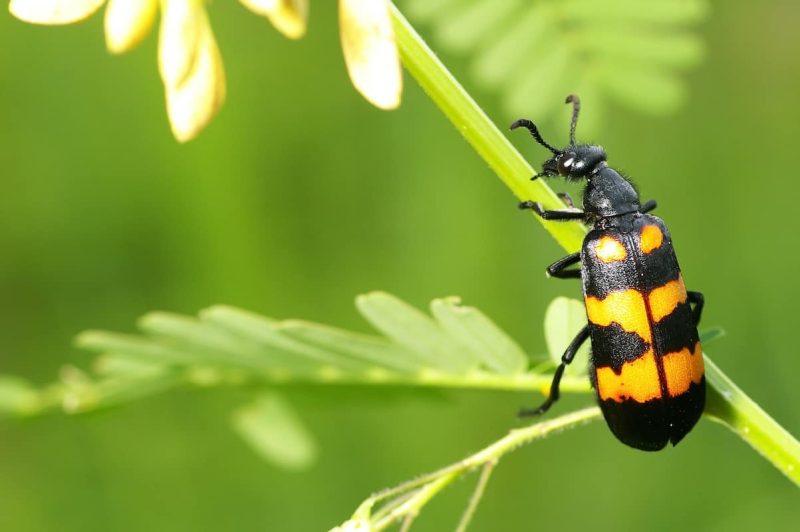
Blister beetles are a family of insects recognized for their elongated bodies and bright coloration, often with black, yellow, or orange markings. While they do not bite or sting, blister beetles secrete a toxic chemical called cantharidin as a defense mechanism. Contact with this substance can cause painful blisters and skin irritation.
In Texas, blister beetles are commonly found on flowers, crops, and grasses during the summer months. Their toxin can pose a hazard to livestock if beetles are accidentally consumed in hay, leading to serious health issues. For humans, handling these beetles without protection may result in blistering or rash at the contact site.
Because of the risk from their toxin, blister beetles should be avoided. Gardeners and farmers are advised to wear gloves and exercise caution when working in infested areas. The blisters caused by cantharidin usually heal on their own but can be painful and may require medical attention if severe.
Thrips
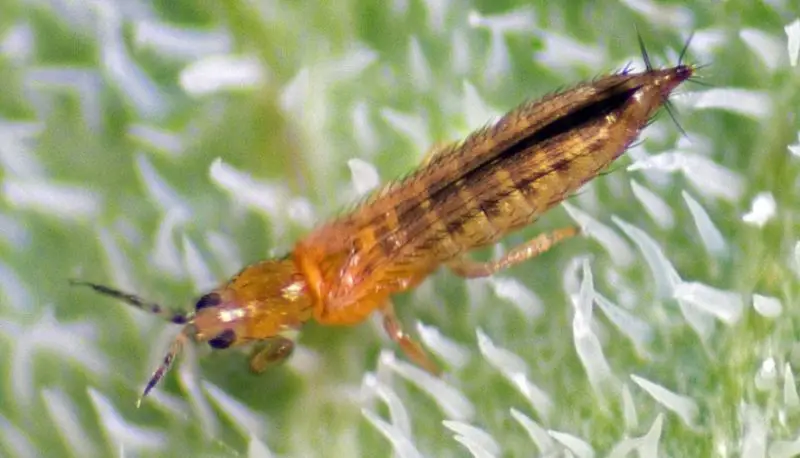
Thrips are tiny, slender insects measuring only about 1 millimeter long, often pale or yellowish in color. They feed by piercing plant cells and sucking out their contents, which can cause damage to crops and ornamental plants. Occasionally, thrips bite humans, resulting in minor itching and irritation.
In Texas, thrips are common in gardens, greenhouses, and agricultural fields, especially during warm weather. Their feeding can cause discoloration, scarring, and distortion of leaves and flowers, reducing plant health and crop yields. Human bites from thrips are usually harmless but may cause mild skin irritation or small red bumps.
Due to their minute size, thrips are difficult to see without magnification. Controlling thrips involves good garden hygiene, use of insecticidal soaps, and encouraging natural predators. While not a significant pest to people, their presence may cause discomfort for those with sensitive skin.
Tiny Black Bugs (Various Biting Diptera)
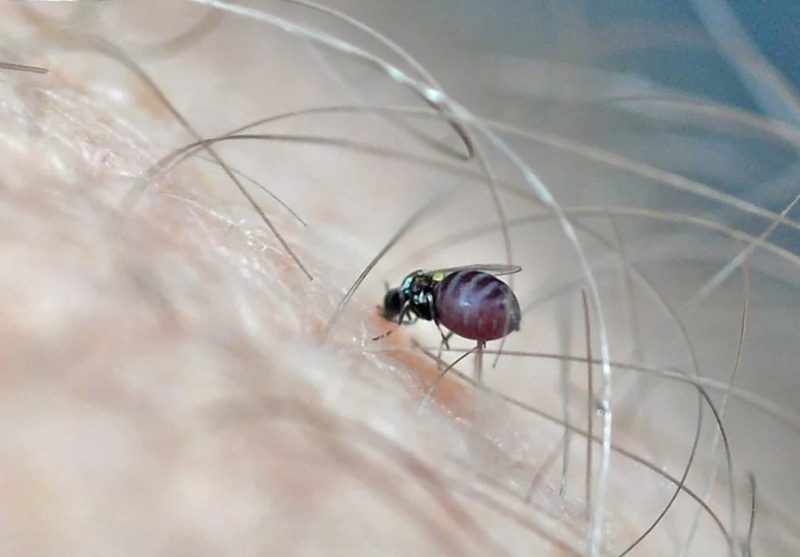
Tiny black bugs refer to several species of small biting flies within the order Diptera, which are common in Texas but often difficult to identify individually due to their size and similarity. These minute flies usually measure just a few millimeters and can swarm in large numbers. Many species bite humans and animals, injecting saliva that causes itching and irritation.
The bites often result in small, itchy red bumps that can persist for several days, sometimes causing localized swelling or allergic reactions in sensitive individuals. Because of their small size, these flies can get through standard window screens and are often most active near moist environments like ponds, wetlands, or shaded vegetation.
These tiny black biting flies are particularly common in the spring and summer months across Texas. They tend to be active during dawn and dusk and can be a nuisance to outdoor activities such as hiking, camping, and fishing. Protective measures include insect repellents, protective clothing, and avoiding heavily infested areas during peak activity times.
Brown Widow Spiders
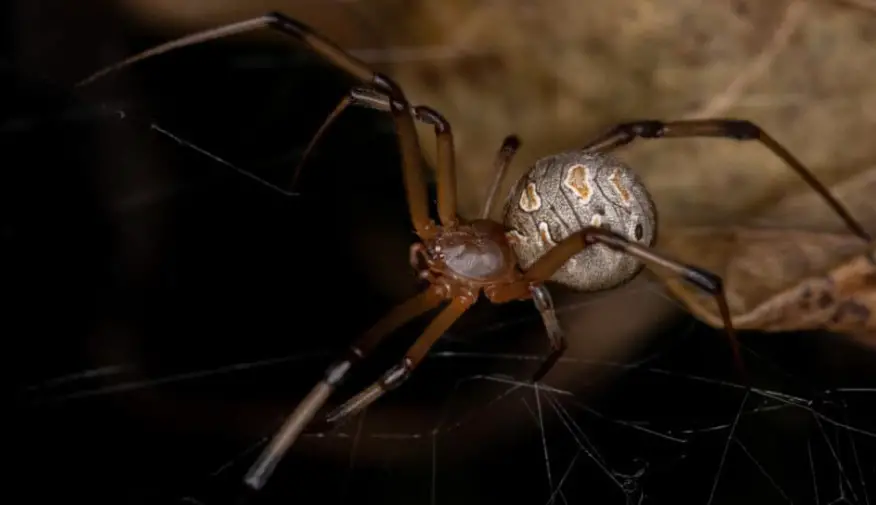
Brown widow spiders closely resemble the more notorious black widow but are generally less venomous and pose a lower risk to humans. They are typically tan to dark brown with distinctive orange or yellow markings on their backs and an hourglass-shaped pattern underneath, often in a yellow or orange color. Adult females are about 1/2 to 3/4 inch in body length, including legs.
Brown widows inject venom that can cause localized pain, redness, and mild systemic symptoms, but serious complications are rare. Their bites are less severe than black widows and usually cause mild to moderate discomfort. The spiders prefer to avoid human contact and will bite only when provoked or accidentally disturbed.
In Texas, brown widows have been spreading and becoming more common, especially in urban and suburban areas. They build irregular, messy webs in sheltered spots such as under outdoor furniture, eaves, and piles of debris. Awareness and caution around these areas can help prevent bites.
Harvestmen (Daddy Longlegs)

Harvestmen, often called daddy longlegs, are arachnids but are not true spiders and lack venom glands. They have small, rounded bodies and extremely long, thin legs, often spanning several inches. In Texas, harvestmen are common in forests, fields, and gardens, where they play an important role in the ecosystem by scavenging decaying plant and animal matter.
Unlike spiders, harvestmen do not bite humans and are harmless. Occasionally, handling them may cause minor skin irritation or allergic reactions in sensitive individuals, but such occurrences are rare. Their gentle nature and lack of venom make them beneficial insects that help clean the environment.
Harvestmen are most active at night and are often found resting on vegetation or walls during the day. Their presence is generally a sign of a healthy ecosystem. In Texas, they appear year-round but are especially visible in spring and fall.
Antlion Larvae (Doodlebugs)
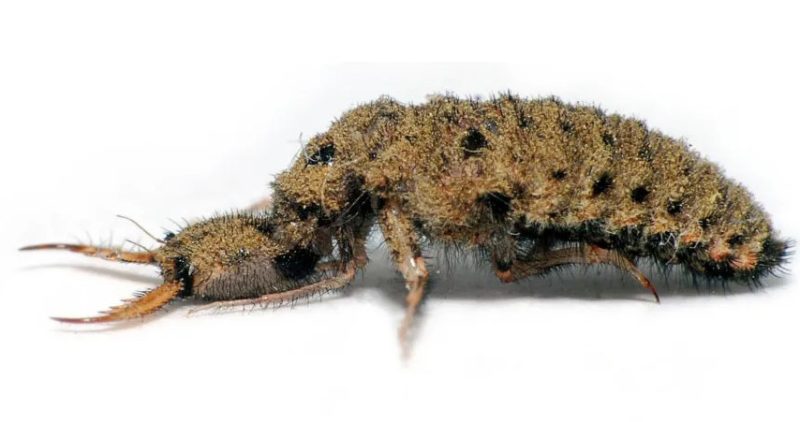
Antlion larvae, commonly known as doodlebugs, are small predatory insects recognizable by their large, flattened jaws and trapdoor-shaped burrows. The larvae grow to about 1/2 inch long and live in loose, sandy soils where they dig conical pits to trap ants and other small insects that slide down into their waiting jaws.
Though antlion larvae can bite if handled roughly, their bite is generally mild and not harmful to humans. They are more known for their fascinating hunting behavior rather than any danger. After pupating, the larvae transform into delicate, dragonfly-like adult antlions.
In Texas, doodlebugs are common in sandy areas such as riverbanks, deserts, and dry soils. Their pits are often found in shaded, undisturbed locations. They are beneficial insects that help control pest populations by preying on ants and other small arthropods.
Stable Flies / Blow Flies
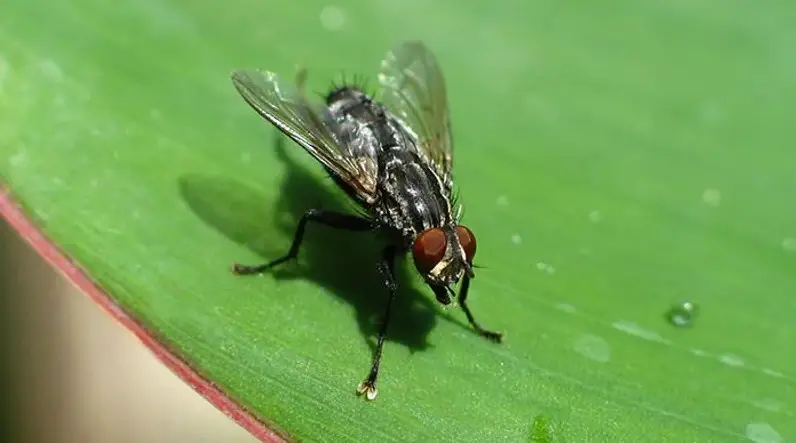
Stable flies and blow flies are two groups of flies commonly found in Texas that resemble the common housefly but differ in behavior and habitat. Stable flies (Stomoxys calcitrans) are known for their painful bites; they have a piercing mouthpart used to feed on blood from livestock and occasionally humans. Blow flies tend to feed on decaying organic matter but sometimes bite as well.
Stable flies measure about 1/4 inch long and have patterned gray bodies, while blow flies are typically metallic green, blue, or black and slightly larger. Stable flies often congregate near farms, ranches, and areas with livestock where they cause irritation to animals and can reduce productivity.
Both flies are active during the warmer months across Texas. Their presence near farms and rural areas makes them pests for farmers and ranchers. Control measures include proper sanitation, removal of breeding sites, and the use of insecticides or traps to reduce their populations.
FAQs about Common Bugs in Texas
What are the most common biting bugs in Texas?
The most common biting bugs in Texas include mosquitoes, fire ants, fleas, ticks, and chiggers. These insects can cause itchy bites and sometimes transmit diseases.
How can I identify a fire ant mound?
Fire ant mounds are dome-shaped piles of loose soil, often found in open sunny areas like lawns and pastures. They can grow up to 18 inches high and 24 inches wide.
Are Texas spiders dangerous?
While Texas has some venomous spiders like black widows and brown recluses, most spiders are harmless and avoid humans. Bites are rare and usually only occur if the spider feels threatened.
What precautions can I take to avoid bug bites in Texas?
Using insect repellents, wearing long sleeves and pants, avoiding heavily infested areas, and checking for ticks after outdoor activities are effective ways to prevent bug bites.
Do all bugs in Texas carry diseases?
No, not all bugs carry diseases. However, some like mosquitoes and ticks can transmit illnesses such as West Nile virus and Lyme disease. It’s important to identify and manage those risks appropriately.


